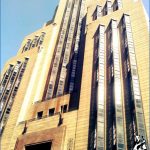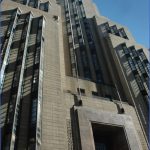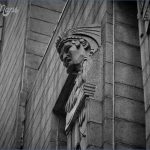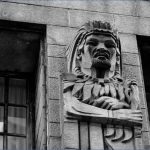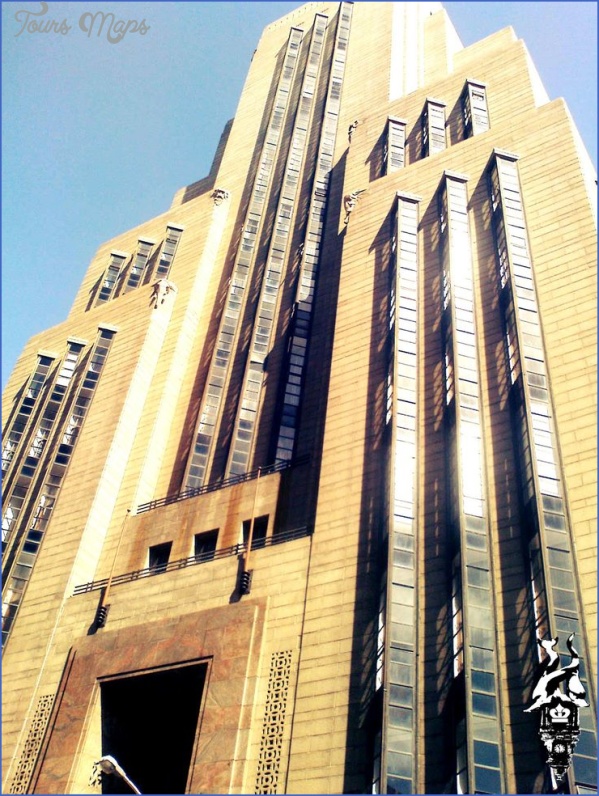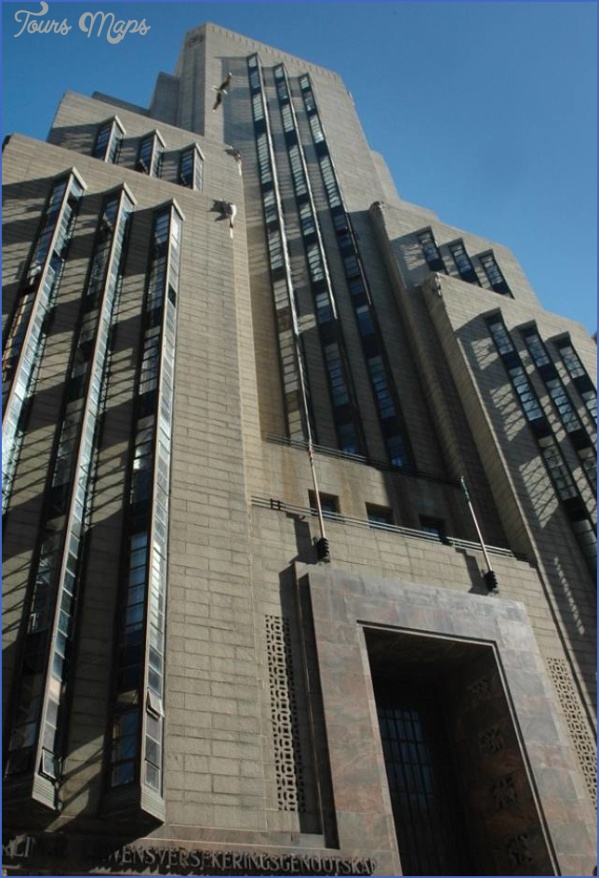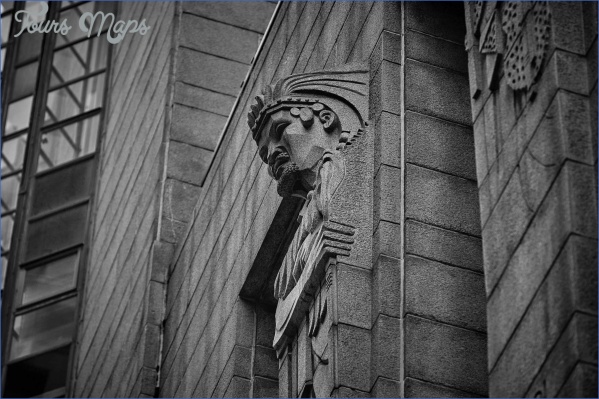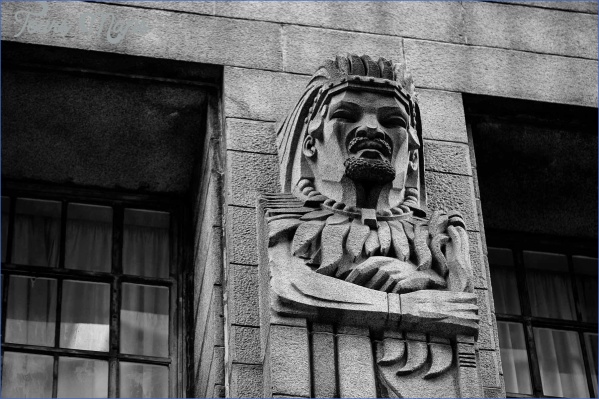The entrance lobby. Black, gold-veined onyx for the walls and burnished gold leaffor the ceiling. At the summit of the 17 steps is the entrance to the Banking Hall, surmounted by a window into which is etched the ziggurat shape of the building. editorial in The South African Architect in January 1940 said: ‘The Old Mutual has given to the Mother City an architectural landmark of which citizens may be justly proud.’ It was right at the time, and it’s a pity now that not many get to see what survives within. After all, this building epitomises the Art Deco style. It was designed by Louw & Louw, working with Fred Glennie who, continued the editorial, ‘may be congratulated upon the successful planning and completion of a building which pleases the eye and admirably serves its purpose’. It’s a building ‘which marks at once a new departure and a higher level of achievement in the field of commercial architecture’.
Opened in 1940 as the headquarters of the South African Mutual Life Assurance Society, it is odd that, less than 20 years later, it no longer suited the purpose for which it was intended. Today, most of the space has been converted into apartments, but its labyrinthine corridors and twisting staircases lead to some extraordinary rooms over which the Old Mutual still retains ownership.
These have hardly, if at all, been changed and remain largely as they were executed, a wonderful example of architect, artist and craftsman working in unison to a single vision. Original light fittings survive, parquet floors are still there, and even the original door handles, in many instances, are still in use. There’s the tall, narrow gold-veined black marble entrance lobby with its burnished gold ceiling and stainless-steel trim. There’s the magnificent colonnaded Banking Hall, where eight columns in red Porto Santa marble extend up through three floors, all its fittings intact, trim and perfectly formed. The frescoed Assembly Room is a tour de force: here, in a series of dado-to-ceiling frescoes, artist Le Roux Smith Le Roux depicted the modern history of South Africa – albeit very much a period view – having earned his laurels painting murals for Herbert Baker inside South Africa House in London. And then there are the directors’ rooms nearby which, fitted out in South African woods, include a boardroom where, at dado level, there’s a continuous stinkwood frieze carved by Ivan Mitford-Barberton with, above it, Joyce Ord-Brown’s mural showing Cape Town as the Tavern of the Seas. Here the furniture is intact in its style, representing a transition between the old world and a glorious new one.
OLD MUTUAL BUILDING Darling Street Cape Town Photo Gallery
What an incredible building; what an extraordinary interior. Hidden from view, this is one of the secrets of the city that should be revealed more frequently to more viewers.
The Banking Hall is characterized by the slickness of its finishes: the black, gold-veined onyx continues up from the lobby; and here, too, are the characteristic stainless-steel trim and light fittings found elsewhere in the building. Double-height marble-clad colonnades line the Banking Hall. Between the columns are the coats-of-arms of each of the Although much of the building has been converted into apartments, the Old Mutual retains ownership of the significant public areas, of which the Banking Hall is one.
Hewn from Paarl Mountain granite, this baboon is part of the external cladding of the building. Along with an elephant and a tribal head, it projects from the upper fagade of the Darling Street elevation.
The Assembly Room, one of the finest interiors in Cape Town, is adorned with frescoes done in 1942 by Le Roux Smith Le Roux, depicting the Great Trek, the discovery of gold and, on the right, progress manifest in new railroads and productive farms.
A detail of the panel depicting engineering, the building industry and railroad construction. Is it the English 1930s painter, Stanley Spencer, who springs to mind as the archetype? Or Masaccio or, even earlier, Giotto, both of whose lumpy figures stoically get on with the job at hand – just as Le Roux Smith Le Roux’s do here?
The Director’s Boardroom: at dado level is a stinkwood frieze carved by Ivan Mitford-Barberton. Above it, Joyce Ord-Brown’s mural depicts Cape Town as the Tavern of the Seas.
Maybe You Like Them Too
- Sanctuary Makanyane Safari Lodge SOUTH AFRICA
- Ruzizi Tented Lodge Akagera National Park, Rwanda
- Map of BOTSWANA – Mombo Camp BOTSWANA
- One & Only Nyungwe House RWANDA
- South Luangwa National Park Safari

